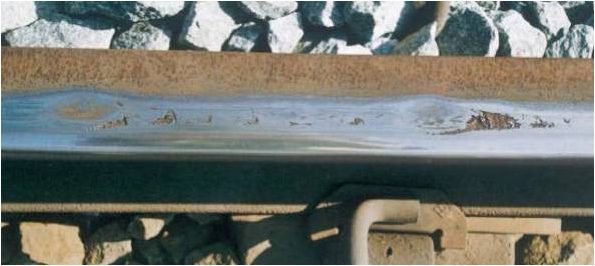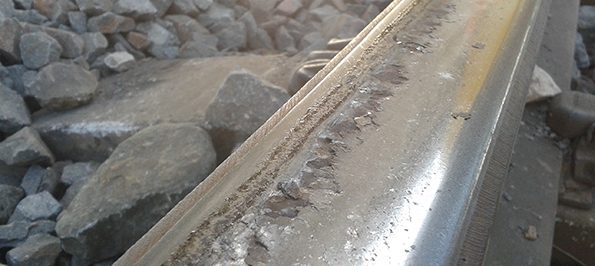RAIl MILLING PROCESS to remove Rolling Contact Fatigue (RCF)
Head checks

mainly occur on the gauge corner of a curve’s high rail. They are caused by material fatigue due to high dynamic stresses in the wheel / rail interface. As crack depths increase, the risk of chipping as well as the change of the defect to grow in the horizontal direction may be the result. In the worst case, this could lead to a broken rail.
Wheel burns

Where trains start, brake or accelerate, skidding of the drive axles may occur. This leads to increased hardness, material shifts in the surface layers and dips.
Wheel burns lead to cracks and result in material failures.
RCF

significantly reduces the rail life due to cracks, material wear and the formation of individual defects. These defects include squats, Belgrospies, indentations or corrugations, driving edge damage, shelling, rolling defects and track corrections.
Preventative maintenance and re-profiling in a timely manner gives no chance for the development and growth of cracks, unsteady rail wheel contact, increased noise emissions or the potential of a broken rail. Rail life will increase significantly.
